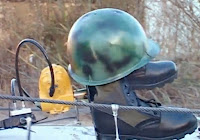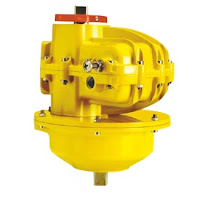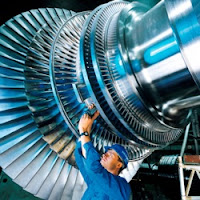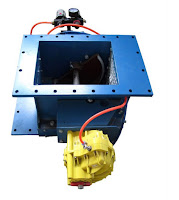Rotary actuators are used in a great variety of applications. There are many designs of rotary actuator, including examples actuated by hydraulic pressure, pneumatic pressure and electric drives. It is also known to use position controllers to modulate the position of the actuator. All of these various designs have in common the purpose of providing an output torque which can be utilized to drive another device or mechanism.
One common application for bi-directional rotary actuators is the positioning of large damper valves controlling the flow of air and other gases along ducting in power generating plants. These dampers are often inaccessible, so it is not possible to install drives immediately adjacent the valve. In such circumstances, the rotary actuator drives the damper valve via a mechanical linkage. The rotary actuator will, in most cases, be used in conjunction with a position controller to provide for accurate control of the position of the damper valve.

In this, and other applications of rotary actuators, it can sometimes be desirable to provide for manual adjustment of the position of the actuator, for example during the initial set-up of a mechanism, or on failure of automatic actuator function. This is generally accomplished by using a so called declutchable manual override gearbox. The gearbox is mounted adjacent to the actuator and is connected to the output of the actuator. Drive is transferred via the gearbox to a drive shaft connected to the gearbox output. The gearbox includes a manually operable override, typically a wheel or lever, selectively engageable with the drive train in the gearbox. In normal operation, this manual override is de-clutched from the drive train. However, if it is desired to manually adjust the position of the actuator and the mechanism it drives, the manual override can be engaged.










